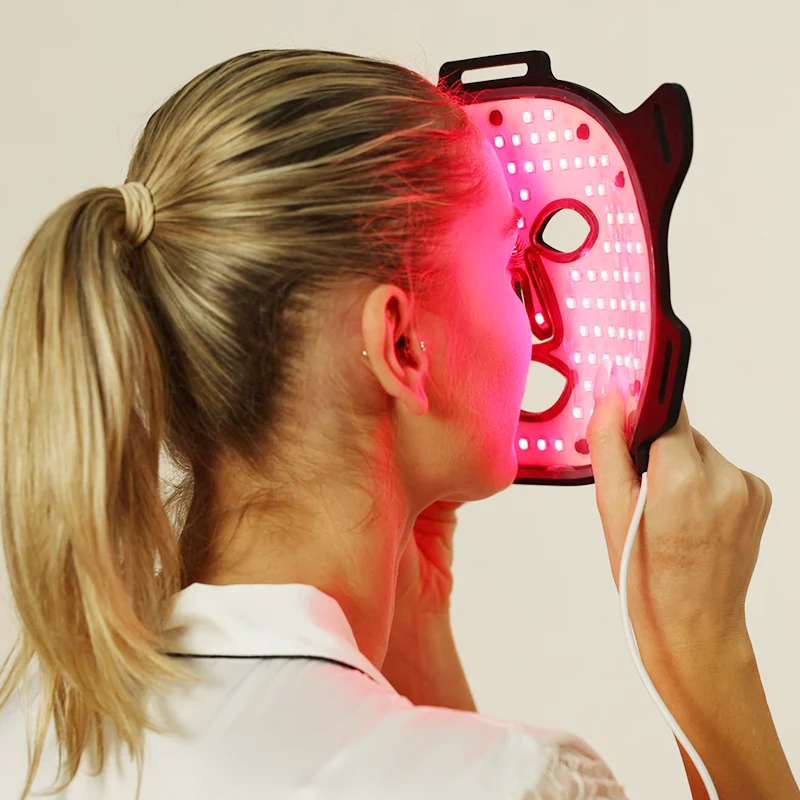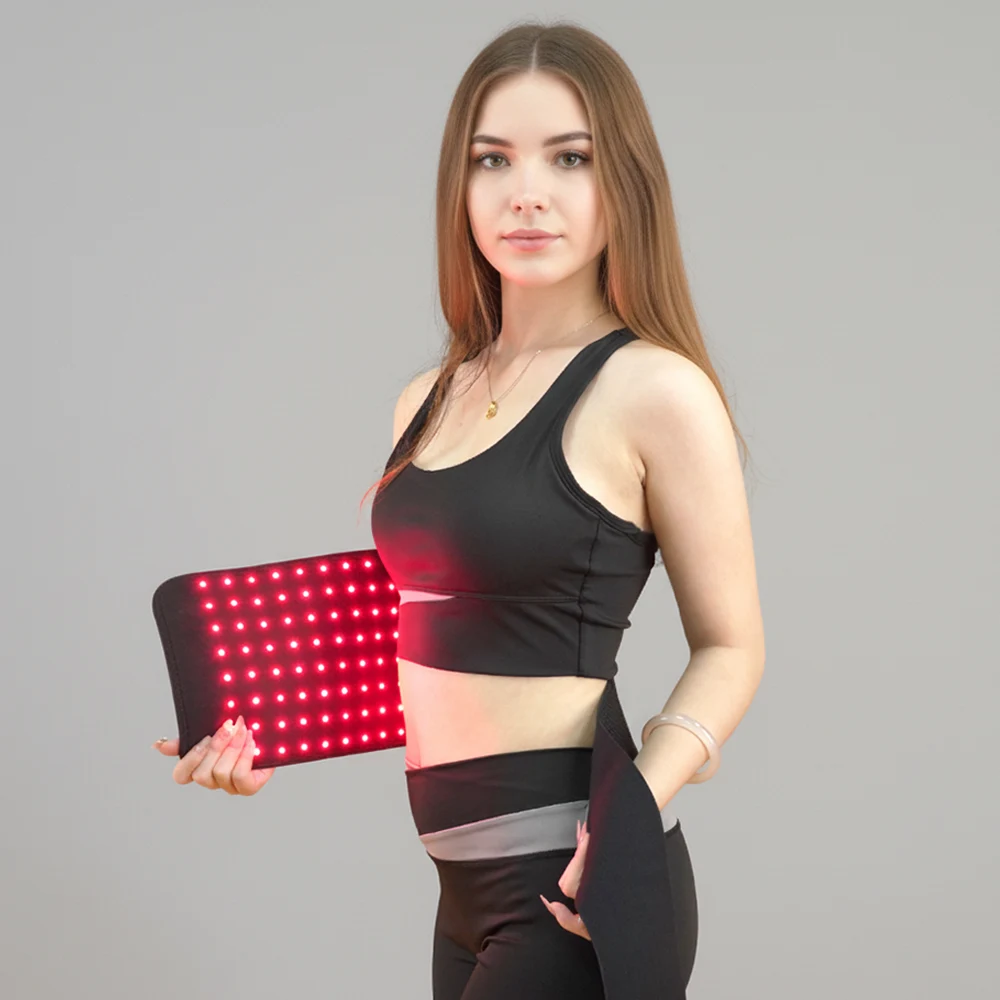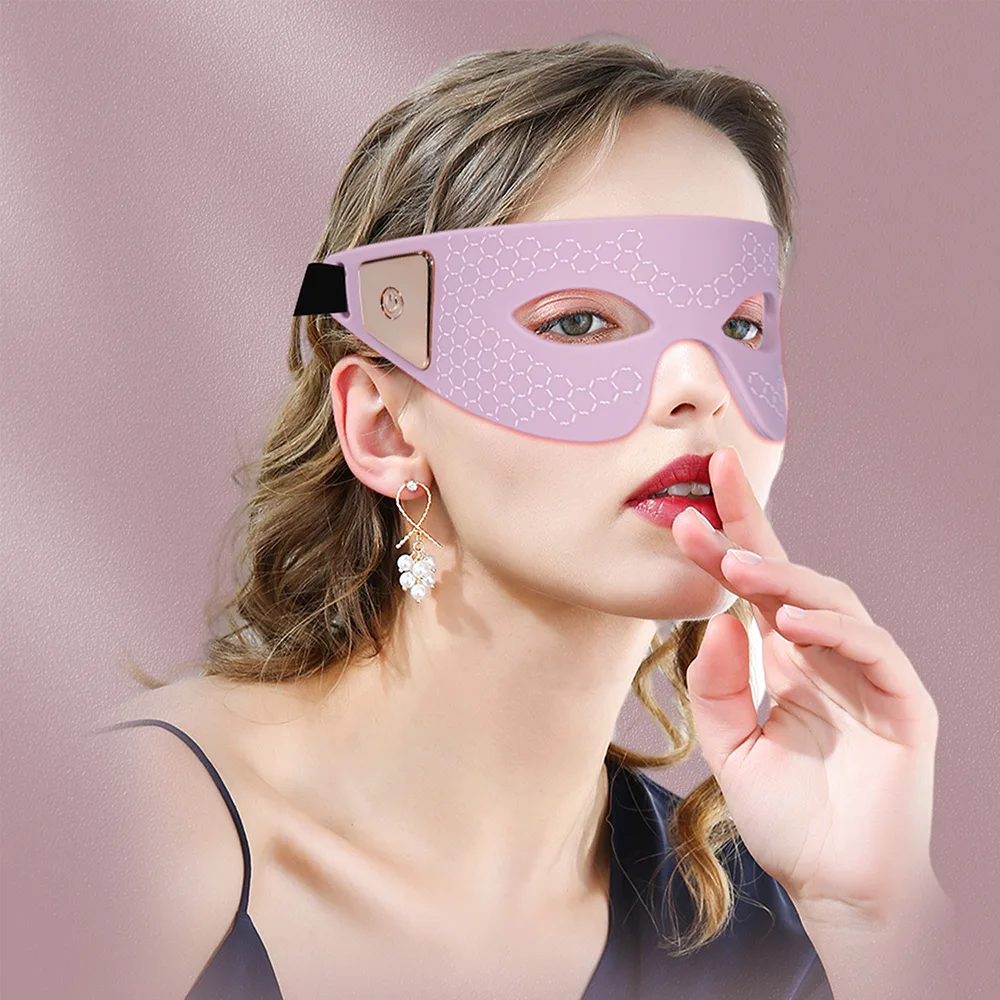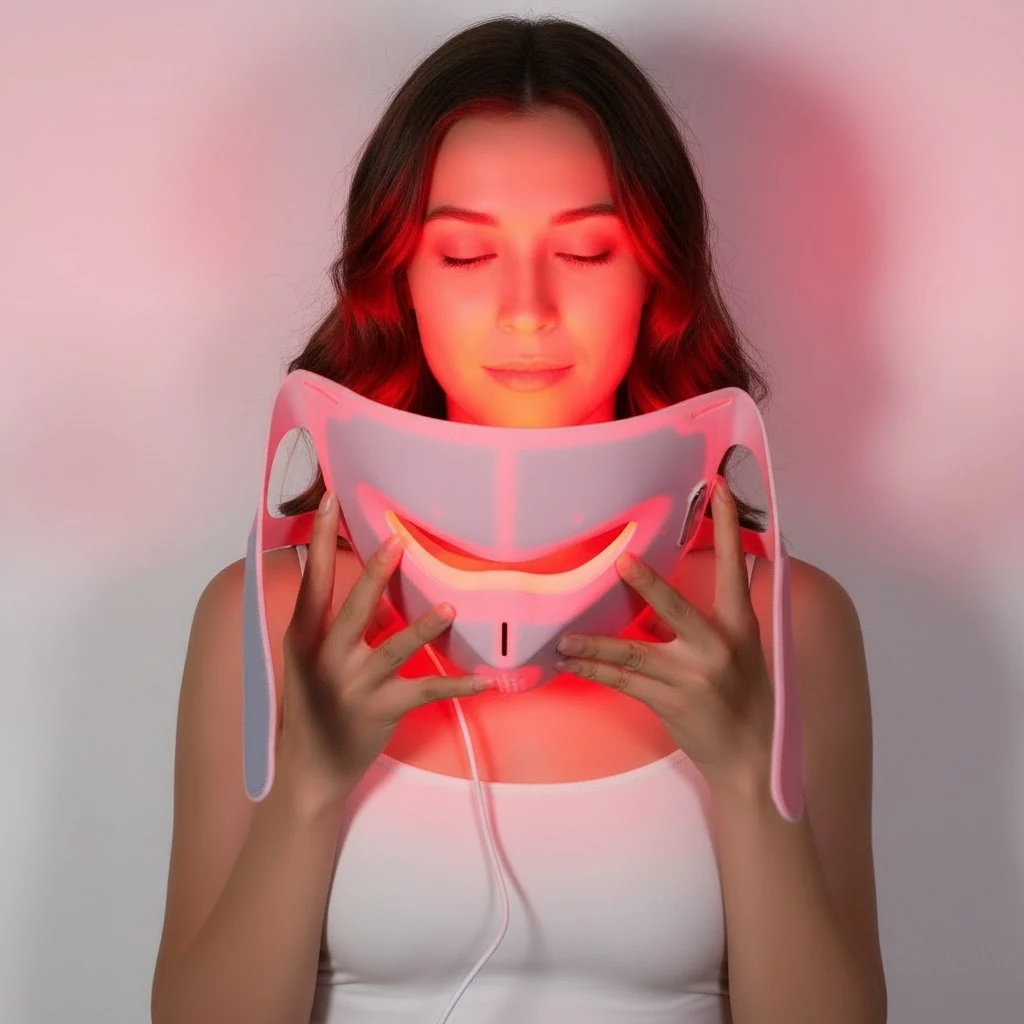How LED Face Mask Works: Science Behind Skin Rejuvenation
The LED Face Mask is based on photobiomodulation technology that utilizes special wavelengths of LED light (light emitting diodes) to promote facial skin rejuvenation and alleviate aging, acne, hyperpigmentation, and overall skin health issues.
What is an LED Face Mask?
An LED face mask is a professional beauty device that utilizes photobiomodulation technology, emitting specific wavelengths of LED light (light-emitting diodes) onto the skin to achieve cosmetic and skincare effects. Typically in the shape of a mask, the light intensity ranges from 10-50mW/cm², and it is a form of non-invasive light therapy widely used in home beauty routines, beauty salons, and medical aesthetic clinics1.

Benefits of LED Face Masks
The LED mask uses medical-grade LED lights that emit different wavelengths and colors of light during use. By consistently following the correct usage throughout the treatment cycle, it can improve skin texture, address skin concerns, and enhance overall skin health. Depending on the wavelength of the light, the LED mask offers a variety of benefits.
Improves Skin Aging
Red light (600-750nm) is the most commonly used wavelength for anti-aging. It penetrates the dermis to stimulate collagen production, reduce the activity of skin-damaging enzymes, improve blood circulation, and enhance the skin’s self-repair ability2. This helps effectively reduce wrinkles, skin sagging, and improve skin texture.Treats Acne
Blue light (400-470nm) helps destroy Propionibacterium acnes, reducing inflammation and aiding in acne treatment3. Red light also promotes skin repair, regulates sebum production, and improves keratinocyte function, further alleviating acne symptoms. A combination of red and blue light can enhance the overall treatment effect.Promotes Wound Healing
Red light (600-750nm) and near-infrared light (760-1000nm) can penetrate the skin deeply, accelerating fibroblast proliferation and collagen synthesis, thus promoting wound healing4. It is particularly effective for post-surgical recovery, minor injuries, and acne scarring.Reduces Pigmentation and Dark Spots
Red light and near-infrared light can inhibit melanin production, helping to reduce dark spots and excessive pigmentation, especially after prolonged UV exposure5. These lights also stimulate mitochondrial activity, promoting the synthesis of collagen and elastin, enhancing skin elasticity.Relieves Skin Inflammation
Blue light and red light can suppress inflammation, reducing redness, swelling, and pain caused by conditions such as acute eczema, dermatitis, and neuropathic pain6. These two lights work well in treating various types of skin inflammation.Decreases Skin Sensitivity
Green light (520-560nm) and yellow light (570-590nm) are suitable for sensitive skin. These wavelengths help soothe the skin, reducing irritation. Green light balances the skin, decreases oil secretion, relieves mental stress, and reduces puffiness. Yellow light enhances skin tolerance, helps diminish blood vessel sensitivity, and improves overall skin resilience.
How LED Skin Light Therapy Works
LED face masks use low-energy visible light to stimulate the mitochondria (ATP) within skin cells, increasing energy production. This photobiomodulation effect enhances cell vitality, reduces free radical damage, repairs damaged cells, and forms a protective barrier on the skin, achieving anti-aging and therapeutic benefits7.
Different wavelengths penetrate the skin to varying depths:
- Blue light: penetrates less than 1mm
- Yellow light: penetrates approximately 0.5-2mm
- Red light: penetrates approximately 2-3mm
- Infrared light: penetrates approximately 5-10mm
This depth of penetration is a key factor in choosing the appropriate wavelength.

Is LED Face Mask Safe?
LED face masks are safe for use, and this can be attributed to the following factors:
- Non-invasive: LED masks use low-energy light therapy, which does not damage the skin’s surface, making it a non-invasive skincare treatment8.
- UV-free: LED light does not emit ultraviolet (UV) rays, so it won’t cause sunburns or increase the risk of skin cancer9.
- Clinically validated: LED light therapy has been widely studied and used in both medical and beauty fields, with its safety supported by various research studies10.
How Long Does it Take to See Results from an LED Face Mask?
The time required to see results from an LED face mask depends on the treatment goals, usage frequency, and individual skin conditions. Below are the expected times for different treatment goals:
- Anti-aging and Firming: For reducing fine lines and improving skin elasticity, noticeable results are typically seen after 3-4 weeks of consistent use11. Most users begin to notice smoother and firmer skin after about 4-6 sessions.
- Acne Treatment: For mild acne, initial improvements can be seen within 1-2 weeks. For moderate to severe acne, it may take 3-6 weeks to notice significant improvements.
- Pigmentation and Skin Tone Improvement: Improvements in dark spots, sunspots, or uneven skin tone are typically visible after 4-6 weeks. Continued use can gradually fade dark spots and enhance overall skin radiance.
Frequency and Duration of Use
- Initial Frequency: It is recommended to use the LED face mask 2-3 times a week during the initial stages. As the skin adapts, the frequency can be reduced.
- Duration per Session: Each session usually lasts 10-20 minutes. It is important not to exceed the recommended time to avoid skin discomfort.

Conclusion
An LED face mask is a modern skincare device that uses different wavelengths of light to effectively improve skin aging, acne, pigmentation, and other skin concerns. Due to its non-invasive nature and UV-free light, it is a safe and popular choice for skincare. However, to achieve optimal results, it is important to use it consistently and follow the recommended usage guidelines.
Related articles

How Red Light Therapy Can Help Relieve Lower Back Pain

How Red Light Therapy Eye Masks Benefit the Eye Area

What certifications are required for a qualified LED red light facial mask?

How to Choose Between a 7-Color LED Mask and a Red-Blue Light Therapy Mask?


The Relationship Between Distance and Treatment Efficiency in LED Light Therapy
References
J. C. Barolet, “The role of light in non-invasive aesthetic medicine,” Journal of Clinical and Aesthetic Dermatology, 2015. ↩
L. T. Lee et al., “Photobiomodulation in the treatment of skin aging,” Journal of Photochemistry and Photobiology B: Biology, 2016. ↩
Y. H. Ryu, “The effects of blue light on acne treatment,” Dermatology Therapy, 2018. ↩
S. A. Ruiz, “Wound healing enhancement via photobiomodulation therapy,” International Journal of Dermatology, 2017. ↩
M. K. Hwang, “Impact of light therapy on pigmentation and skin elasticity,” Journal of Cosmetic Dermatology, 2019. ↩
M. S. Lee, “Effects of LED light therapy on inflammatory skin conditions,” Journal of Dermatology Treatment, 2018. ↩
A. E. Hamblin, “Photobiomodulation for skin rejuvenation,” Photomedicine and Laser Surgery, 2014. ↩
A. A. Weiss, “Safety and efficacy of LED phototherapy for skincare,” Journal of Clinical Aesthetic Dermatology, 2018. ↩
J. H. Tsai, “UV-free benefits of LED light therapy in aesthetics,” International Journal of Cosmetic Science, 2017. ↩
L. H. J. Huang, “Clinical applications of LED light therapy in aesthetics and medicine,” Journal of Medical Aesthetics, 2020. ↩
D. K. Patel, “Effectiveness of LED light therapy for anti-aging treatments,” Journal of Cosmetic Science, 2015. ↩
Our dedicated team is always ready to respond swiftly to your questions and needs, providing you with efficient and personalized support!

